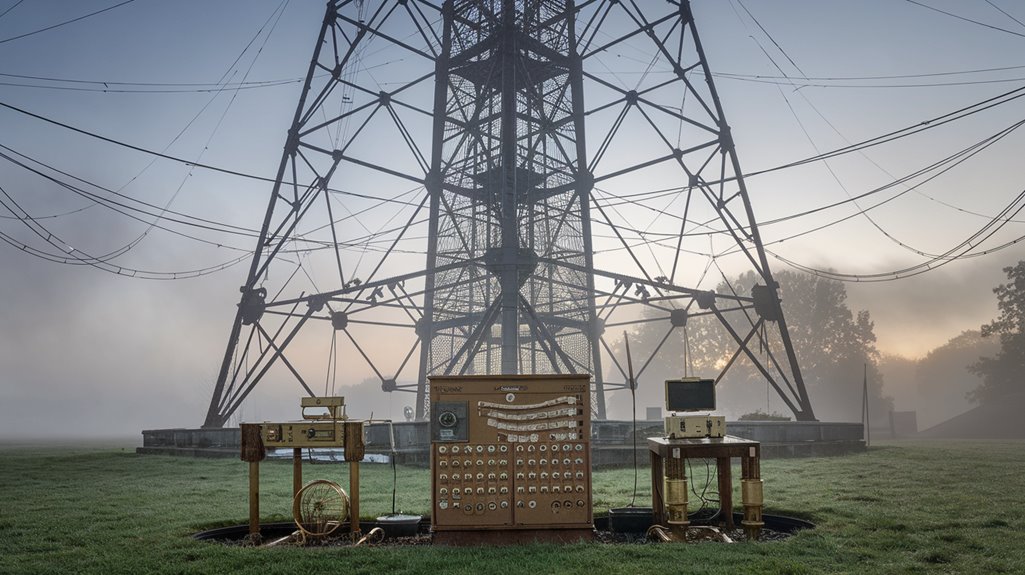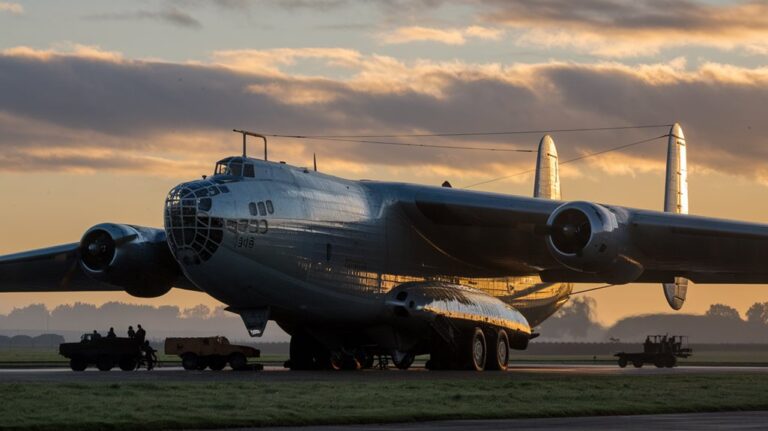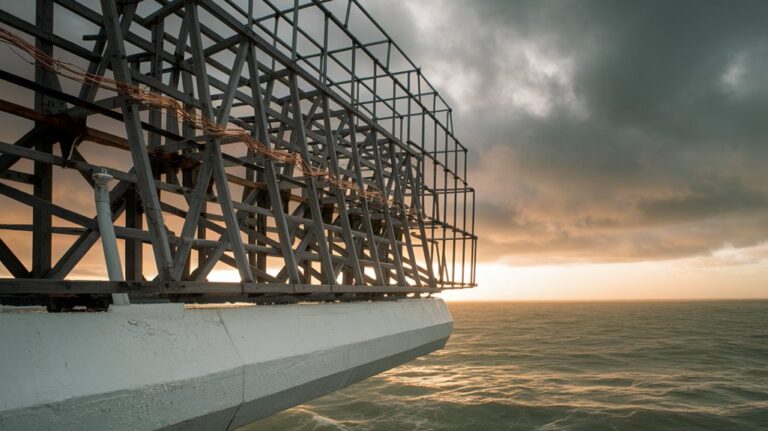Britain’s ‘Death Ray’ That Became WWII Radar
You might not know that Britain's groundbreaking radar system started as a quest to build a deadly energy beam weapon. In the tense years before World War II, scientists worked to create what newspapers dubbed a "death ray" that could disable enemy aircraft engines mid-flight. While this sci-fi vision proved impossible, it led to something far more valuable: a network of early warning stations that would help save Britain from German air attacks.
From Science Fiction to Scientific Reality

While the concept of a death ray may sound like something from a science fiction novel, it actually sparked Britain's development of radar technology during World War II.
In the 1930s, fears of German military expansion and rumors of their super weapons pushed Britain to explore the possibility of creating their own death ray. What began as scientific imagination soon confronted reality when calculations revealed that such a weapon would require impossible amounts of power to function. The research, led by Robert Watson-Watt, explored electromagnetic radiation for potential military applications. The resulting radar systems could detect aircraft range up to 80 miles away.
Yet this apparent failure wasn't the end of the story. Scientists discovered that while radio waves couldn't destroy aircraft, they could detect them.
Japan had reached similar conclusions through their own death ray experiments using magnetrons. Britain's government quickly shifted focus, transforming their quest for a destructive beam into the development of a revolutionary detection system that would change the course of the war.
Watson-Watt's Pivotal Discovery
Before his groundbreaking radar work, Robert Watson-Watt specialized in using radio waves to track thunderstorms. His expertise led him to develop the high-frequency direction finding system in the 1920s, which later proved essential in detecting German U-boats during WWII.
In 1935, Watson-Watt's career took an unexpected turn when he investigated claims of a German "death ray." While he concluded that such a weapon wasn't feasible, this investigation sparked a revolutionary idea: using radio waves to detect aircraft. The British government had specifically asked him to investigate the RF death ray possibility.
He quickly put his theory to the test at Daventry, where he successfully bounced signals off a Handley Page Heyford aircraft using a BBC short-wave transmitter. This experiment marked the birth of practical radar technology, transforming Watson-Watt's thunderstorm-tracking expertise into an indispensable tool for Britain's air defense. His innovation proved crucial as Chain Home radar stations were operational across Britain's coast by 1938.
The Evolution of Chain Home Defense
After Watson-Watt's successful radar demonstration in 1935, Britain rapidly developed its Chain Home defense network.
You'd find the first five stations protecting London's approaches by 1937, and by the time war broke out in 1939, twenty-one stations were fully operational.
The system proved invaluable during the Battle of Britain, effectively giving the RAF the power of three times more fighters.
Early detection provided 20 minutes warning of incoming aircraft, giving RAF fighters crucial preparation time.
As radar technology advanced, you'd see remarkable improvements in Britain's defense strategies.
The network expanded westward and northward, while transmitter power increased from 100 kW to an impressive 750 kW for better range.
The introduction of "The Fruit Machine," an analog computer, streamlined target plotting and reduced staffing needs.
Even after WWII, Chain Home proved essential to Britain's defense, being incorporated into the ROTOR system during the Cold War before finally being retired in 1955, replaced by more sophisticated systems.
How Britain's Radar Changed the War
Three key innovations made Britain's radar system a game-changer in World War II.
First, the Chain Home network could spot enemy aircraft from 80 miles away, giving RAF fighters vital advance warning. When the Nazis attacked radar stations, the quick repair capabilities kept the system operational and effective. The presence of dedicated Women's Auxiliary Air Force members working in tracking and communications strengthened Britain's air defense network.
Second, the sophisticated Dowding System integrated radar data with fighter command, creating an unprecedented defense network that maximized Britain's radar advantages.
You'll find the third innovation in how the RAF revolutionized aerial tactics using this technology.
By receiving accurate information about Luftwaffe formation strengths and targets, British commanders could deploy exactly the right number of fighters to intercept threats.
This efficiency preserved pilots and aircraft, while the Germans exhausted themselves in failed attacks.
Even when the Luftwaffe tried flying at lower altitudes to evade detection, Britain's rapid development of Chain Home Low stations maintained their defensive edge.
The Global Race for Radar Supremacy

While Britain's radar prowess proved decisive in World War II, they weren't alone in pursuing this revolutionary technology. By 1939, eight countries had independently developed their own radar systems, marking an unprecedented era of military innovation.
Key developments in radar technology emerged across the globe:
- Britain's Chain Home system led the pack, later shared with the US and Commonwealth allies.
- Germany's Funkmessgerät showed promise but halted development in 1940.
- The US Navy's XAF system could detect aircraft up to 100 miles away.
- Japan's program lagged behind but demonstrated the global reach of this arms race.
The competition intensified as nations recognized radar's strategic importance. The US Signal Corps formally introduced the term RADAR in 1939. While some countries collaborated, sharing technical secrets through initiatives like the Tizard Mission, others worked in isolation, creating a complex web of technological advancement that would shape modern warfare. Germany's failure to recognize the strategic value of British radar systems ultimately contributed to their defeat in the air war.










